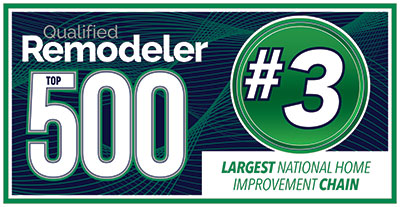Problems With Sliding Patio Doors
Sliding patio doors are an excellent addition to any home that wants to have seamless indoor-outdoor transitions. However, these doors are not immune to problems that arise over time. Several factors can cause common issues that might emerge with sliding patio doors. This article will outline some of the most common problems encountered and provide solutions on how to fix them.
Common issues with sliding patio doors
Sliding patio doors are an excellent addition to any home, providing easy outdoor access and letting in plenty of natural light. However, like any other component of your home, sliding doors can encounter issues over time. Common problems include sticking or jamming doors, difficulty locking or unlocking, broken or damaged rollers, misaligned tracks, drafts, air leaks, and foggy or cracked glass.
Sticking or jamming doors
Sticking or jamming doors can be frustrating, especially when enjoying the fresh air or entertaining guests. There are several reasons why this problem can occur, including a misaligned door or track, debris buildup in the tracks, rust or a damaged roller. To fix the issue, remove debris from the tracks, screw or adjust any locks on the door, and apply lubrication to all moving parts. These simple steps can help ensure that your sliding door glides smoothly and effortlessly.
Difficulty in locking or unlocking
Another common issue with sliding doors is difficulty locking or unlocking them. A misaligned door or track can cause this, as a damaged lock that needs lubrication or a latch that doesn’t engage with the strike plate. To solve this problem, re-align the door properly, adjust the locking mechanism or latch, and apply lubrication to the lock and key. These steps can help ensure that your sliding door locks and unlocks easily, providing you with peace of mind and added security.
Broken or damaged rollers
Broken or damaged rollers can cause the door to stick, jam, or slide. This is usually because of worn-out rollers, rust, or debris buildup in the tracks. To fix this problem, remove debris from the tracks, replace any damaged rollers with new ones, and lubricate all moving components. These steps can help ensure that your sliding door slides smoothly and effortlessly, providing you with the necessary convenience and functionality.
Misaligned tracks
Misaligned tracks are another common problem with sliding patio doors. This can be caused because the track is not level or has shifted due to severe weather conditions. This problem can cause the door to stick or not slide smoothly. To solve this issue, remove and re-level the track, replace any damaged track, and then reinstall the door securely. These steps can help ensure that your sliding door operates smoothly and efficiently, providing you with the necessary convenience and functionality.
Drafts and air leaks
Drafts and air leaks are other common issues with sliding patio doors. This occurs when the weatherstripping is worn out or damaged, causing a gap between the door and the frame that allows air to come in. To fix this problem, replace the weatherstripping or add additional weather-sealing materials to the door. These steps can help ensure that your sliding door is energy-efficient and keeps your home comfortable all year round.
Foggy or cracked glass
Foggy or cracked glass occurs when the seal between the glass panes fails, allowing moisture to enter. This problem can compromise the door’s insulating properties and cause air leaks. In such cases, replace the glass or the complete door if necessary. These steps can help ensure that your sliding door is functional and aesthetically pleasing, adding value and beauty to your home.
Causes of sliding patio door problems
While sliding patio doors are a durable and reliable option, several factors can cause these problems. These include poor installation, wear, and tear over time, weather-related damage, and lack of maintenance. Let’s dive into each of these factors in more detail.
Poor installation
Poor installation is one of the most common causes of sliding patio door problems. If the installation is done incorrectly, the door will be unstable, and the hardware may malfunction, resulting in sticking doors or damaged rollers. It’s important to hire a professional installer with experience installing patio doors. A professional installer will ensure that the door is level, plumb, and square and that all the hardware is installed correctly. This will prevent future problems and ensure that your door operates smoothly for years.
Wear and tear over time
With continuous use, patio doors will experience normal wear and tear. The rollers, tracks, and locking mechanisms will naturally degrade over time, causing door-related issues. By regularly maintaining your door, you can extend its life. This includes lubricating the rollers and tracks, cleaning the door’s surface, and checking the hardware for any signs of wear or damage. If you notice any issues, it’s important to address them promptly to prevent further damage and ensure your door operates smoothly.
Weather-related damage
Sliding patio doors exposed to extreme weather conditions, such as humidity, rain, or heavy winds, are prone to weathering. The door’s tracks can rust, and the rollers may wear out prematurely, causing misalignment or difficulty while opening or closing the door. To prevent weather-related damage, it’s important to choose a door designed for your area’s specific climate. Additionally, regular maintenance can help to prevent weather-related damage by keeping the door’s hardware in good condition.
Lack of maintenance
Although patio doors can last for many years, they still need regular maintenance to keep them in good condition. Lack of cleaning and oiling can cause the door to stick and jam, and dirt can block the track, leading to misaligned doors. Regular maintenance includes cleaning the door’s surface, lubricating the rollers and tracks, and checking the hardware for any signs of wear or damage. By caring for your patio door, you can ensure that it operates smoothly and lasts many years.
How to troubleshoot and fix sliding patio door problems
You do not need to be a DIY expert to fix common sliding patio door problems yourself. By following these simple steps below, you can fix most of the problems that arise.
Cleaning and lubricating the tracks
Check all tracks and remove any dirt, debris, or rust. Wipe them with a damp cloth and spray a lubricant to enhance smooth sliding without bumpy interruptions.
Adjusting or replacing rollers
The rollers that ensure the door slides need to be maintained and replaced when needed. Unscrew the roller and replace it with a new one if worn-out. Alternatively, you can adjust them to create minimal friction that allows sliding on the track.
Realigning the door
Misaligned sliding doors can be solved by adjusting the height of the rollers or by shifting the track position. You can do this by removing the door from its frame and making the necessary adjustments before securely reinstalling it.
Sealing gaps and drafts
You can add weatherstripping to the door frame to prevent air leaks and drafts. The weatherstripping should be a tight seal that blocks gaps along the door’s edges.
Repairing or replacing damaged glass
If your door has foggy or cracked glass, it may need to be replaced entirely, or the glass can be replaced. However, this job is best performed by a professional, so we recommend seeking professional assistance.
Conclusion
Sliding patio doors are a great addition to any home, but they can have problems over time. These problems include sticking or jamming doors, difficulty locking or unlocking, and misaligned tracks. The issues can be fixed by doing appropriate maintenance and cleaning the door regularly. However, suppose you encounter severe issues such as broken or damaged rollers or significant wear and tear. In that case, it’s best to seek professional advice to restore the door to its original functionality.






